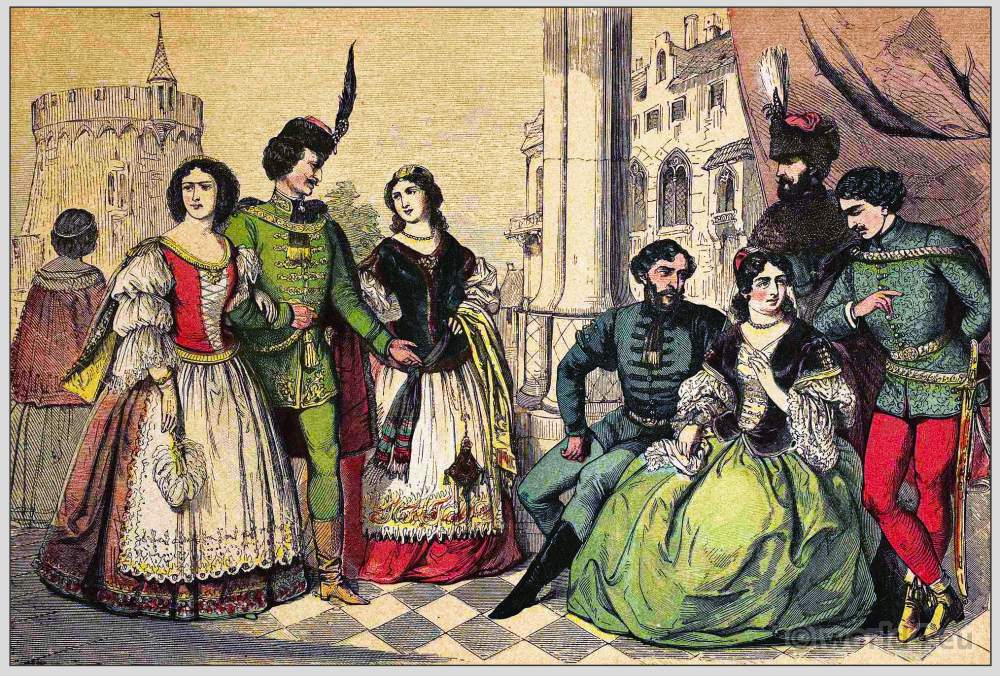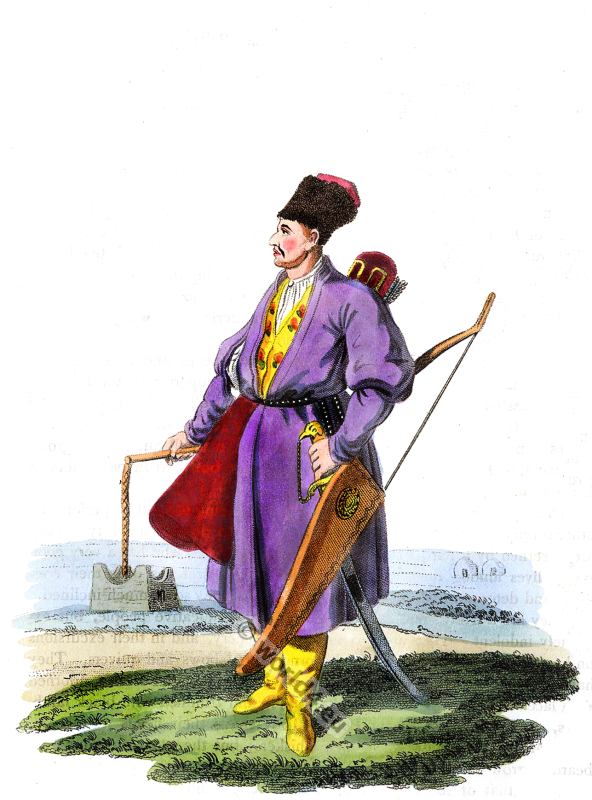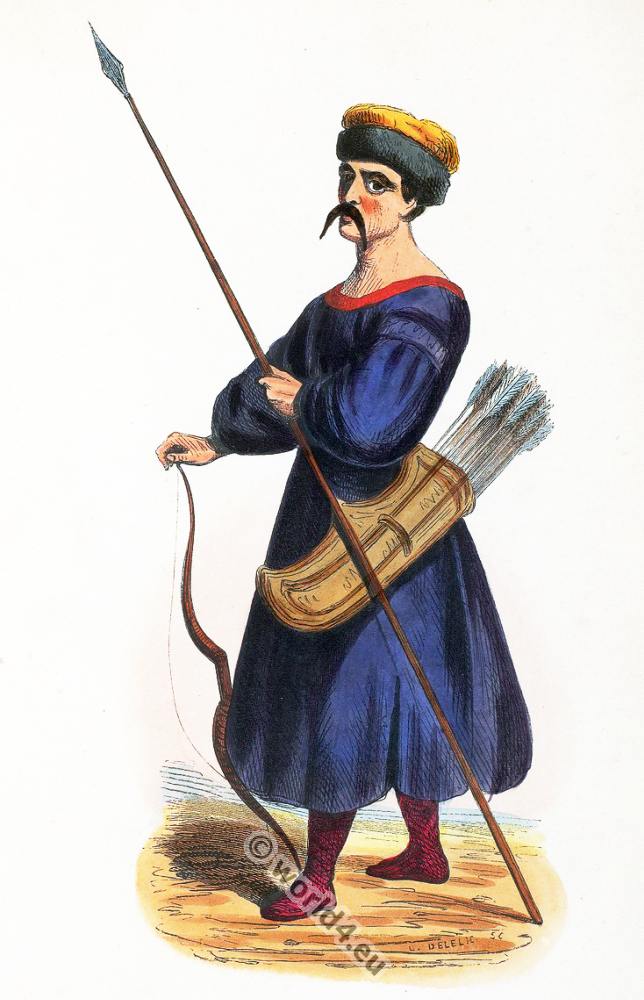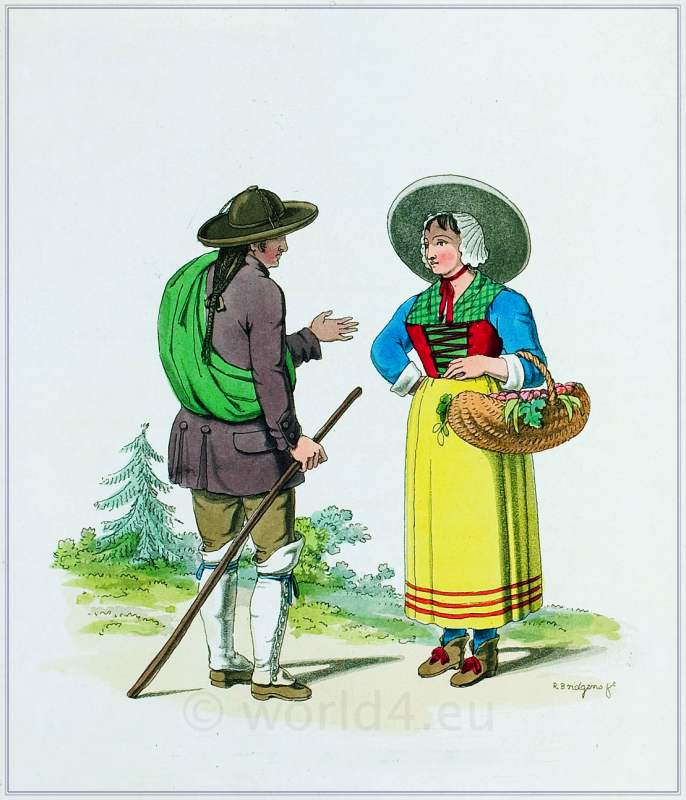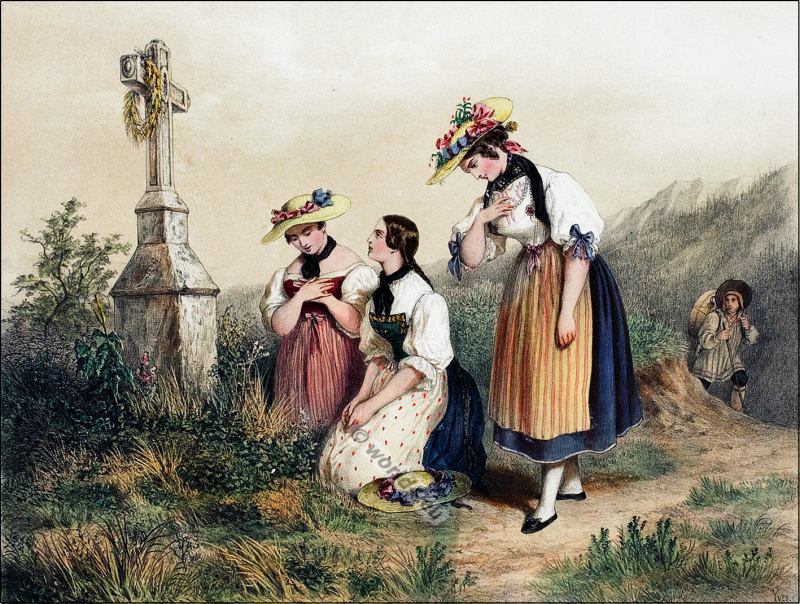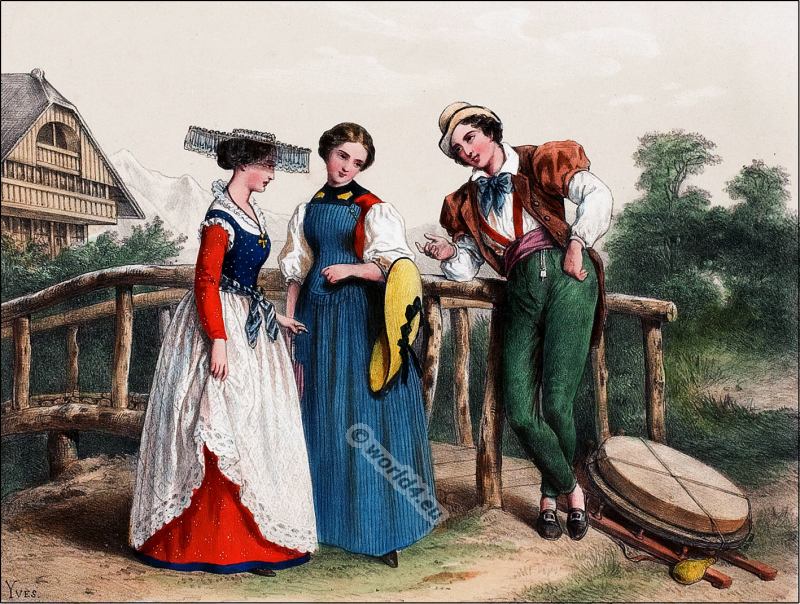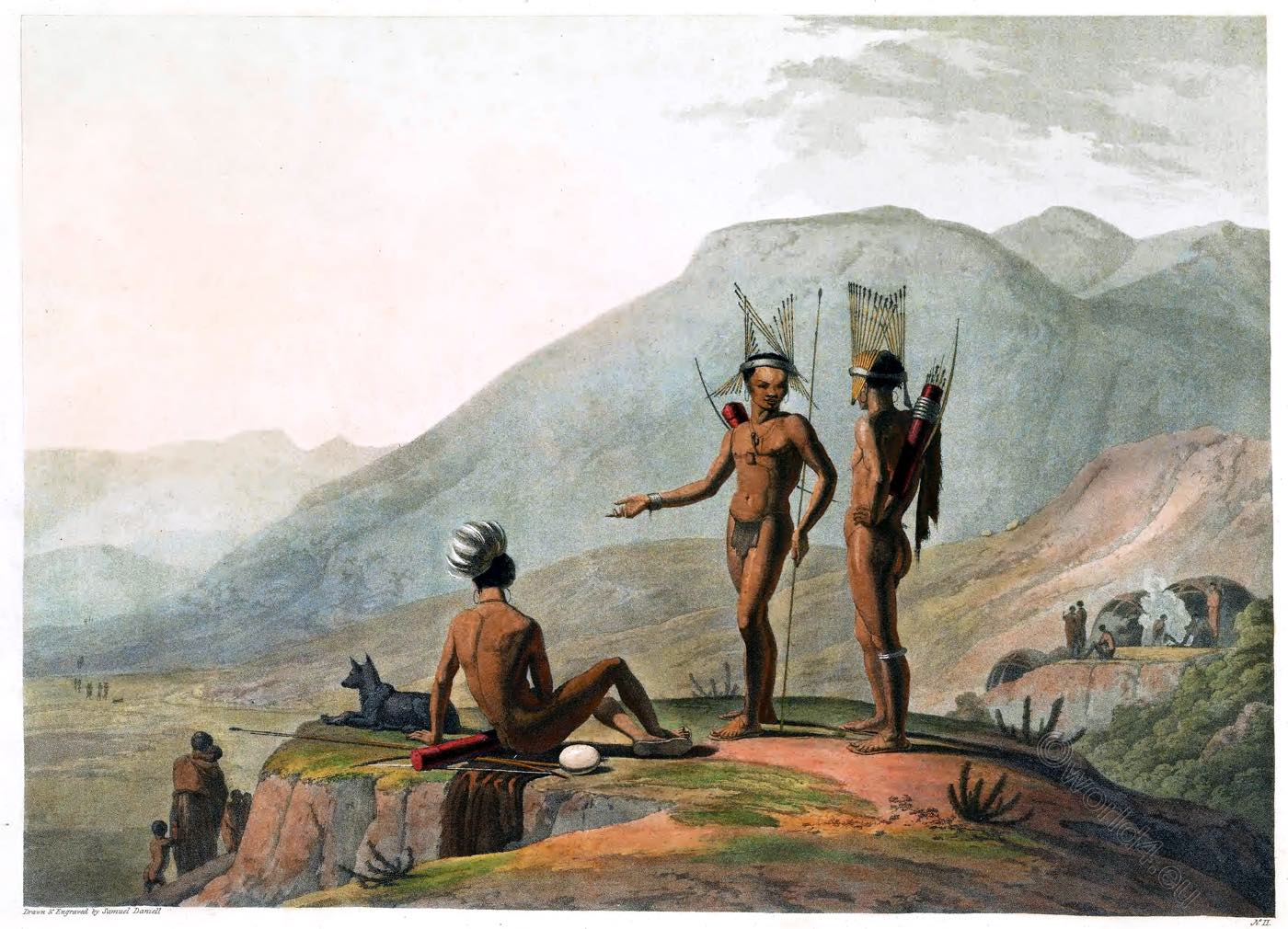
The Khoisan are population groups of the south and southwest of Africa, to which the Khoikhoi and the San belong. Hottentot was a collective term first used by the Boers in colonial times for the Khoikhoi family of peoples living in today’s South Africa and Namibia, to which the Nama, the Korana and Griqua (Orlam and Baster) belonged. It is now assumed that the Dutch term Hottentot has been used mainly in a derogatory, racist and discriminatory manner since its introduction. Moreover, the English word Hottentots has been applied to people with a supposedly inferior culture and lack of intellectual ability.
THE BUSHMEN. Armed San men about to set off on an expedition.
No 2.
(Orig. Text)
THE Bosjesmen or Bushmen Hottentots may be justly classed among the lowest and most miserable of human beings. They neither till the ground nor breed cattle, but live from day to day on the precarious spoils of the chace, the stolen cattle of the colonists, or on lizards, snakes, white ants, wild honey, caterpillars, and locusts; and when all these fail them, they have recourse to the roots of vegetables: yet some of them attain a great age, and, what is very remarkable, they seldom lose any of their teeth, though they are worn down by use and age to mere stumps.
Numbers of Bushmen were observed to be blind of an eye, which was said to be chiefly owing to sparks flying from fires when they were children. Many of them also had the first joint of the little finger wanting, which had purposely been taken off when young, either as a charm against misfortune, or a preventive against disease. So little notion have they of the value of property, that whenever they are so successful as to carry off a whole herd of cattle from the colonists, they kill them all at once, and without quitting the place of slaughter, feast together, till the whole is either consumed or turned into a mass of putrefaction.
They then set out, equipped like the two figures here represented, in quest of some new prey, carrying with them their whole property, which consists of a bow and quiver of arrows, some of which, probably for convenience, they wear fantastically stuck round their heads. Their stature is very diminutive, seldom exceeding four feet and a half, and the women still shorter.
Source: African scenery and animals by Samuel Daniell, William Daniell, Thoma Dowdeswell. London 1804.

